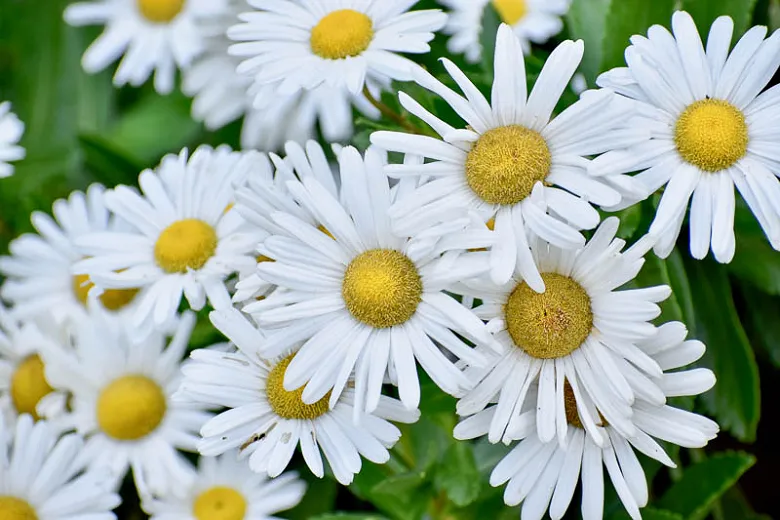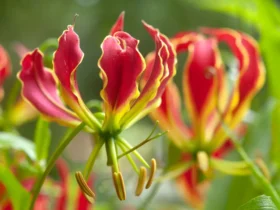Nippon Daisy, also known as Nipponanthemum nipponicum or Montauk Daisy, is a perennial flowering plant native to the coastal regions of Japan. It is a member of the Asteraceae family and is often valued for its late-season blooms and attractive appearance.

Here’s more information about Nippon Daisy:
Description:
- Nippon Daisy features glossy, dark green, leathery leaves with coarse teeth and a slightly succulent texture. The leaves contribute to its overall lush appearance.
- The plant grows in a bushy manner with sturdy, woody stems that support its foliage and flowers.
- Due to its adaptation to coastal environments, Nippon Daisy can tolerate salt spray, making it suitable for seaside gardens.
Size:
- Nippon Daisy typically reaches a height of 18 to 36 inches (45 to 90 cm) and has a similar spread, forming a mounded clump as it grows.
Flowers:
- The plant produces large, showy flowers with white petals that surround bright yellow centers. Each flower can measure up to 2 to 3 inches (5 to 7.5 cm) in diameter and consists of numerous ray florets radiating around a central disk.
Blooming Season:
- Nippon Daisies are known for their late-season blooms, with flowers appearing from late summer to fall. This makes them particularly valuable for adding color and interest to the garden during a time when many other plants are winding down.
Hardiness:
- Nippon Daisies are hardy in USDA zones 5 through 9, indicating that they can withstand a range of temperatures and climates. They can tolerate cold temperatures down to -20°F (-29°C) when well-established.
Uses:
- This plant is commonly used in perennial borders, rock gardens, coastal gardens, and other landscape settings to provide late-season color.
- The attractive flowers can also be used as cut flowers in arrangements.
Why Grow Nippon Daisies:
- Late-Season Blooms: Nippon Daisies offer blooms later in the season, extending the period of color in your garden.
- Attractive Flowers: The large, showy white flowers with yellow centers create a visually appealing display.
- Pollinator-Friendly: The flowers attract pollinators like bees and butterflies, supporting a healthy garden ecosystem.
- Low Maintenance: Nippon Daisies are relatively easy to care for once established and are resistant to deer and rabbits.
- Coastal Garden Suitability: Their ability to tolerate salt spray makes them suitable for seaside gardens.
- Drought Tolerance: Once established, these plants can withstand dry conditions.
- Versatility: Nippon Daisies can be used in various garden settings, including mixed borders and rock gardens.
Planting and Care:
- Plant Nippon Daisies in spring or early fall in a location with full sun (6 to 8 hours per day) and well-drained soil.
- Provide a layer of mulch around the base of the plant to retain soil moisture, suppress weeds, and regulate soil temperature.
- Water the plant if it shows signs of wilting during prolonged drought.
- Prune the plant in early spring to encourage bushy growth and remove spent flowers throughout the growing season.
- Monitor for pests and diseases, and treat as needed.
Propagation:
- Nippon Daisies can be propagated through stem cuttings or division.
- Stem cuttings are taken in late spring or early summer and rooted in a well-draining medium.
- Division involves separating healthy portions of the plant’s root ball and replanting them.
In summary, Nippon Daisies are a valuable addition to the garden, providing late-season blooms, pollinator attraction, and low-maintenance care. Their adaptability and attractive features make them a popular choice for various landscape designs.








